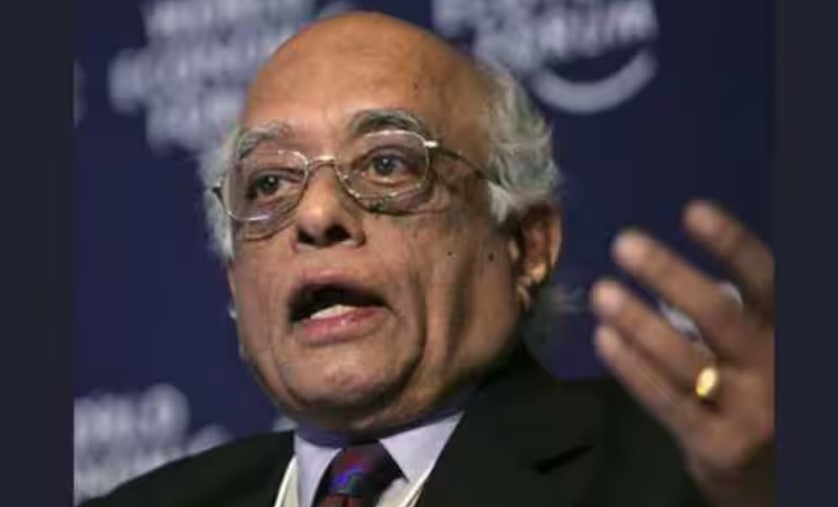
R. Chidambaram is a name synonymous with India’s scientific advancement and nuclear self-reliance. Known for his pioneering contributions to the country’s nuclear program and leadership in scientific research, Chidambaram stands as one of the most celebrated scientists in India’s modern history.
Early Life and Education
Born on October 12, 1936, R. Chidambaram developed a keen interest in science early in life. He pursued his education at Presidency College, Madras, and later earned his doctorate in physics from the Indian Institute of Science, Bangalore. His academic foundation laid the groundwork for his illustrious career in research and development.
Contributions to Science and Technology
Chidambaram’s expertise lies in condensed matter physics, but he is most famous for his pivotal role in India’s nuclear program. As the head of the Department of Atomic Energy (DAE), he spearheaded several critical projects that strengthened India’s position as a global nuclear power.
Nuclear Tests in Pokhran:
One of Chidambaram’s most notable achievements was his involvement in the Pokhran-II nuclear tests in 1998. These successful nuclear detonations under his scientific leadership showcased India’s advanced technological capabilities to the world.
Advancements in Condensed Matter Physics: Chidambaram’s research in theoretical and experimental condensed matter physics has been instrumental in understanding materials’ structural properties, contributing significantly to the field of material science.
Leadership Roles
Chidambaram has held several key positions that have shaped India’s scientific and technological trajectory:
Principal Scientific Adviser (PSA) to the Government of India: In this role, he played a crucial part in fostering a culture of innovation and scientific research.
Director of Bhabha Atomic Research Centre (BARC): Under his leadership, BARC saw remarkable progress in nuclear research and development.
Chairman of the Atomic Energy Commission: As Chairman, he emphasized sustainable energy solutions, especially through nuclear power, to address India’s energy needs.
Awards and Recognition
R. Chidambaram’s outstanding contributions have earned him numerous accolades, including:
- Padma Shri (1975) and Padma Vibushan (1999), two of India’s highest civilian honors.
- Fellowships from prestigious scientific academies, including the Indian Academy of Sciences and the Royal Society of Chemistry.
Visionary Advocate for Science
Beyond his scientific achievements, Chidambaram is an ardent advocate for leveraging technology to address societal challenges. He has consistently emphasized the importance of self-reliance in technology and the need for collaboration between academia, industry, and government to foster innovation.
Operation Smiling Buddha: India’s First Nuclear Test
Operation Smiling Buddha marks a pivotal moment in India’s history, symbolizing the nation’s emergence as a nuclear power. Conducted on May 18, 1974, at the Pokhran Test Range in Rajasthan, it was a bold declaration of India’s scientific and technological capabilities. This operation not only reshaped global geopolitics but also set the stage for India’s subsequent advancements in nuclear technology.
Background and Context
In the decades following its independence, India focused on self-reliance and technological progress. The country’s nuclear program, initiated by Homi Bhabha, was aimed at peaceful applications of nuclear energy. However, geopolitical tensions, including the 1962 Sino-Indian War and China’s first nuclear test in 1964, underscored the need for a robust defense strategy.
Under the leadership of Prime Minister Indira Gandhi and with scientific contributions from the Bhabha Atomic Research Centre (BARC), India pursued nuclear technology with a focus on peace and self-reliance. The decision to conduct a nuclear test was a calculated move to assert India’s strategic autonomy without entering an arms race.
The Test
Operation Smiling Buddha, codenamed Pokhran-I, was conducted under stringent secrecy. The nuclear device, developed indigenously by Indian scientists, was an implosion-type design using plutonium. The operation was named “Smiling Buddha” as it was conducted on Buddha Purnima, a significant day in Buddhism.
Site: Pokhran Test Range, a remote location in Rajasthan’s Thar Desert.
Yield: Estimated at 8–12 kilotons of TNT.
Team: The operation was led by eminent scientists, including Raja Ramanna, R. Chidambaram, P.K. Iyengar, and others.
The test was deemed a “peaceful nuclear explosion” (PNE), emphasizing its non-aggressive intent.
Impact and Reaction
Domestic Impact
The successful test was a matter of immense national pride, showcasing India’s scientific prowess. It underscored the capabilities of Indian scientists to achieve technological milestones independently.
International Reaction
The test drew mixed reactions globally:
Support: Some nations appreciated India’s emphasis on peaceful nuclear technology.
Criticism: Western countries, particularly the United States and Canada, criticized the test and imposed sanctions, citing non-proliferation concerns.
Non-Aligned Movement: As a leader of the NAM, India justified its test as a step toward strategic independence and a deterrent against external threats.
Operation Smiling Buddha marked India’s entry into the exclusive group of nuclear-capable nations. While it led to temporary diplomatic challenges, it laid the foundation for India’s robust nuclear program and subsequent tests in 1998 (Pokhran-II).
R. Chidambaram’s work has left an indelible mark on India’s scientific landscape. His vision, dedication, and pioneering spirit continue to inspire generations of scientists and researchers, ensuring that India remains at the forefront of scientific innovation.
